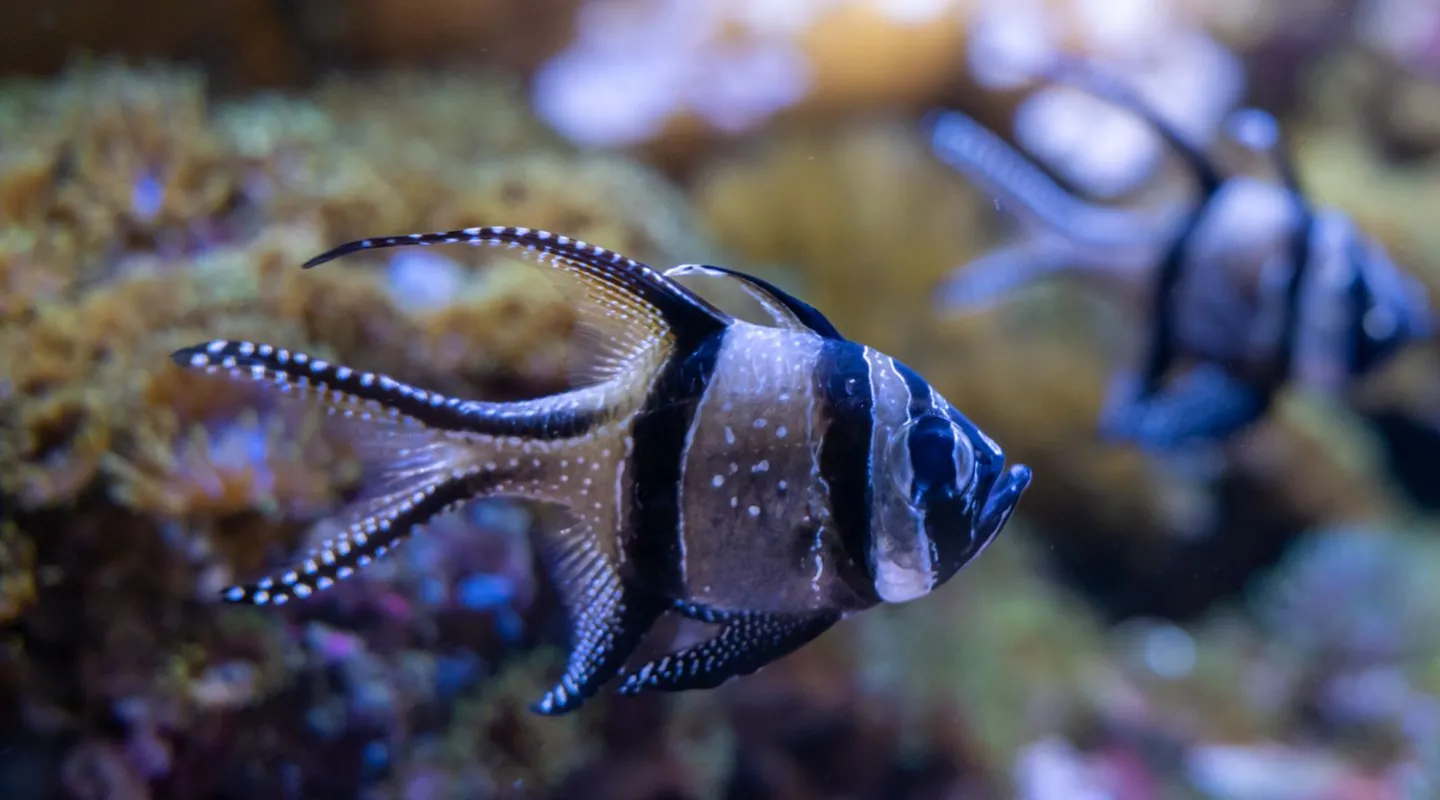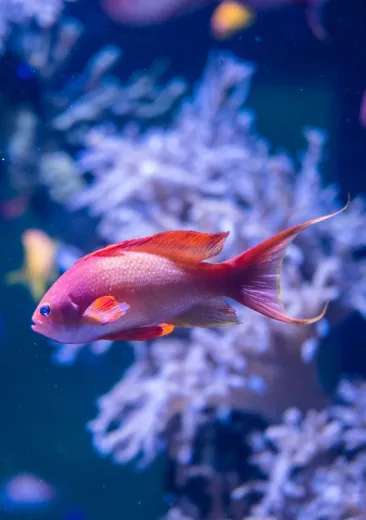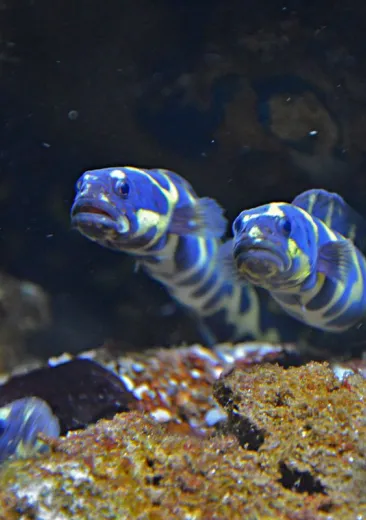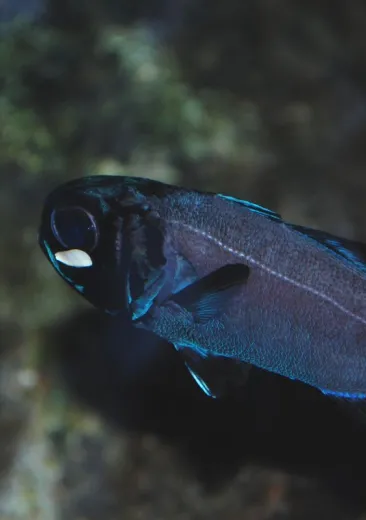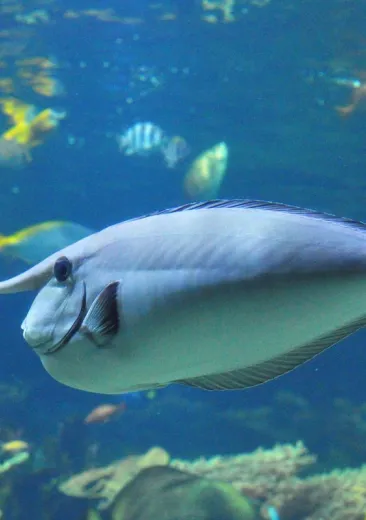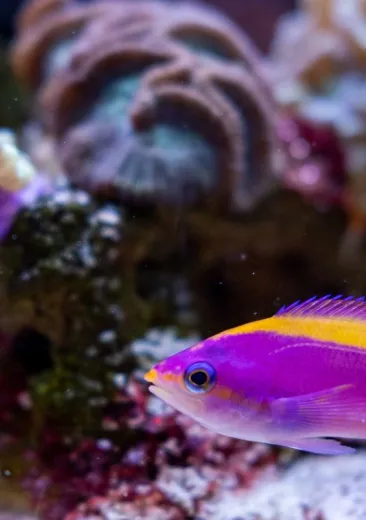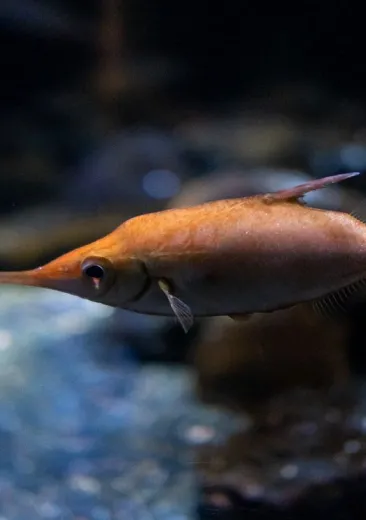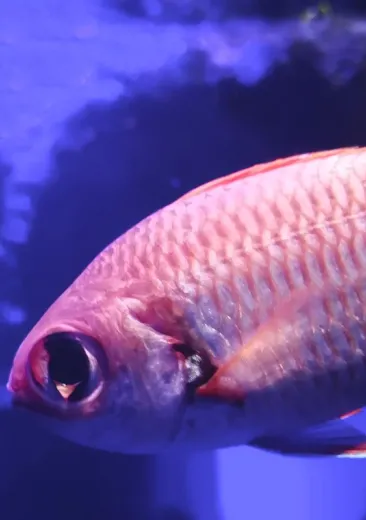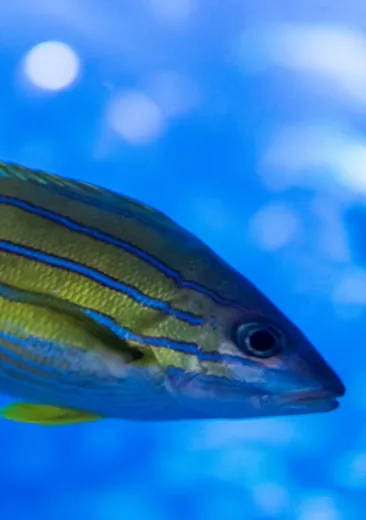The male does not eat and spends most of its time turning the eggs and disposing of any dead embryos. It also provides shelter for juveniles for several days after hatching before releasing them into the water. It keeps them safe between the spines of sea urchins or between the tentacles of anemones. The Banggai cardinalfish is very protective of its young.

Identity card
Banggai Cardinalfish
- Scientific name:
- Pterapogon kauderni
- Family:
- Apogonidae
- Class:
- Actinopterygii
- Phylum:
- Chordata
- Year of description:
- Koumans, 1933
- IUCN Status:
- Endangered
- Distribution:
-
It was discovered in the Banggai Islands of Indonesia.
- Habitat:
-
Coral reefs and seagrass meadows
- Size:
It can measure up to 7-8 cm in length.
- Diet:
-
Zooplankton and invertebrates
